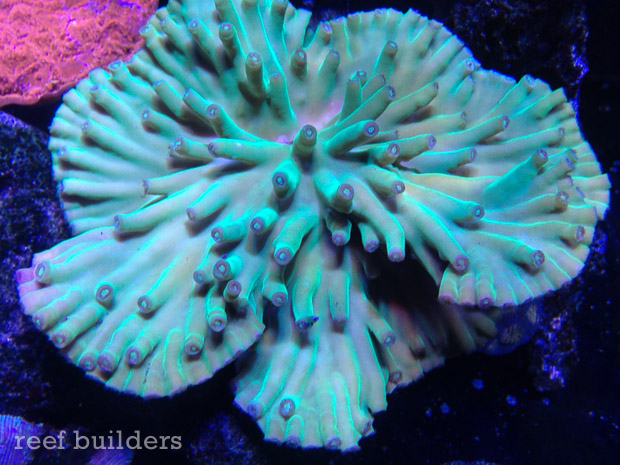I’ve been personally fascinated with Turbinaria heronensis ever since the first time I saw one in a book, but never could I have believed that I would ever get my hands on a whole colony of this fantastic species. Looking more or less like an Acropora suharsonoi dressed in Turbinaria clothing, there really is nothing, no other stony coral species, quite like this one.
About three years ago a very small handful of Turbinaria heronensis began showing up from Australian coral imports, and the majority of these went to coral fraggers who quickly commoditized their colonies into dozens of tiny little frags, most of which did not survive. In a twist of luck, I happened to be at Oculus shortly after they had received a beautiful colony of this coveted coral, and somehow managed to ensconce it away from them.

I was elated to have such a showy coral in my collection, and not a tiny bit! Unfortunately, when the T. heronensis colony was held at Oculus it was being lit with really bright, 400 watt metal halide lamps and the coral promptly bleached shortly after getting it in my possession. The entire colony turned ghostly white, and it almost never showed any signs of life or polyp extension for over a year.
But while the coral looked like a bleached-out, zombie living dead colony, it never receded any tissue and it algae never grew on its skeleton, leaving me some sliver of hope that the coral could be brought back to health. Nevertheless, in my heart I had already written off this coral for dead but I wasn’t about to give up on such an irreplaceable coral species and colony.

Faith turned into hope about 15 months ago when the ghostly white Turbinaria heronensis began showing the minutest degree of polyp extension, but only at night. By this time I was already keeping it under my super low-light “mesophotic” reef tank with only about 20 umols of blue light PAR. Under these moderate flow and light conditions, the coral gradually began accepting target fed particulate foods and seemed to be growing a teeny weency bit, but it was still as pale as casper the white yellow tang.
Then through the grace of some minor miracle, about 12 months ago the colony of T. heronensis that I had so meticulously nurtured began to turn a corner and it started regaining the slightest imaginary hints of color. Six months later and the spiny cup coral had enough olive brown color to encourage me to place it under “real lighting”, nearly tripling the light intensity under which it was placed to about 60-80 umols of mixed color PAR.

So here I am now, 30 months since I first acquired this coral and I can now look at the T. heronensis with pride, and with an awesome story of coral comeback and never giving up on the most prized specimens. The Turbinaria heronensis now sits prominently among some beautiful chalices under average light levels that peak at 150 to 200 umols of PAR during the middle of the day, and it is really beginning to put on some size and gaining color, vibrance and fluorescence.
You can bet your caudal fin that as soon as this coral puts on a tad more girth, I will be fragging some samples to share and distribute to my most trusted reefing peers because if one coral deserves to live on in the cannon of coral history, this one is it.




